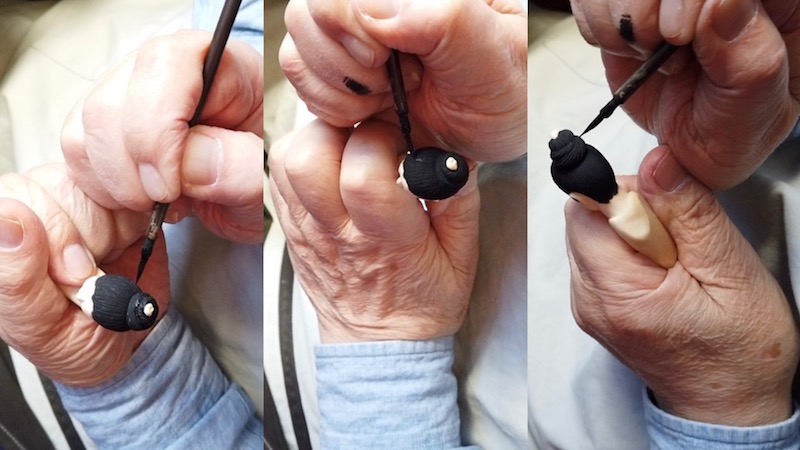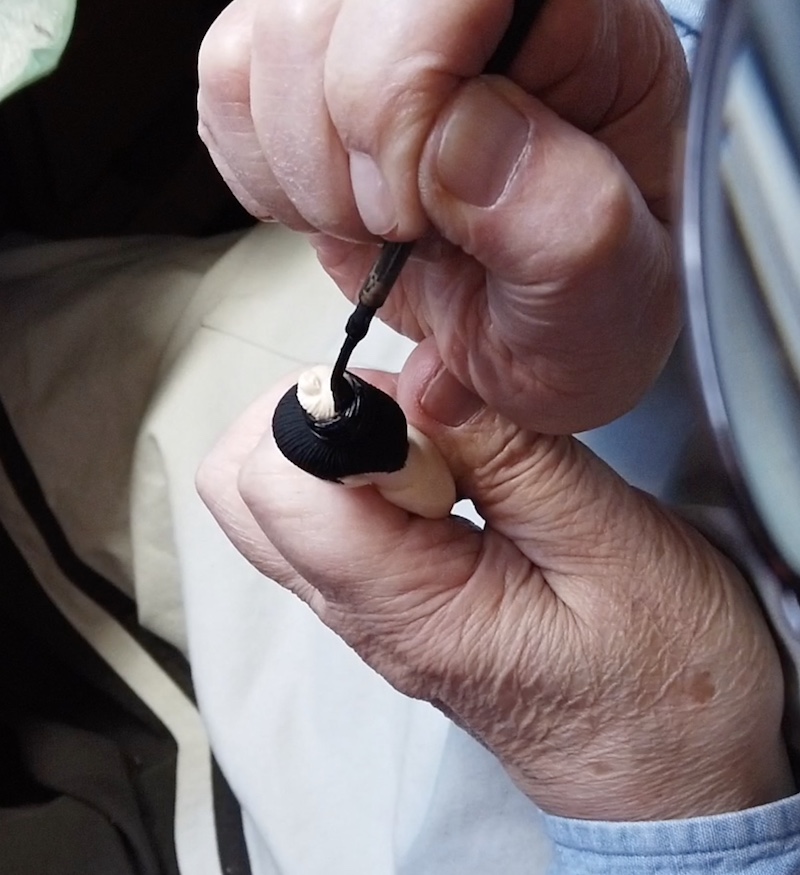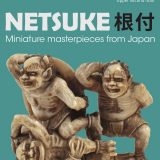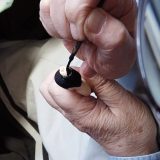In this video, my father paints the bun, while he also fills the pores of the paint on the head.
This footage may seem monotonous, as he just keeps painting. However, watching all of it will give you some ideas concerning how to efficiently paint a material with an unsmooth surface and how to hold a brush and a piece steady when painting details.
Particularly worthy of note in this video is how my father moves the brush. He moves it not only from right to left (or from top to bottom) but also from left to right (or from bottom to top). When moved from heft to right (from bottom to top), the brush gets more tilted toward the piece, and the tip half (from the tip to the middle part) of the brush touches it. This results in a smoother movement of the brush without causing pores. It is helpful when painting materials that tend to get pores of paint, such as mammoth tusk whose oil content seems to have diminished over time compared to ivory (please note that this description of “oil content” is based on my father’s impression rather than scientific examination) as well as materials whose carved surfaces tend to be rough.
Also worthy of attention is the way he uses both hands, e.g., the way he holds the brush, and how he presses his right hand firmly against his left hand that holds a piece (as can be seen in the photos below). He says that, the older one gets, the more difficult it is to move the brush smoothly. For many years he has tried different ways of holding the brush steady while painting minute details.

In addition, he says there is no single way that is exclusively right or that works for all cases. He suggests that artists try various ways and find a best solution at each time.
Each video of this series is uncut (except the beginning, ending, and unpleasant camera shake), so that viewers can take ideas from my father’s ways of using (holding) tools and of holding a work firmly.


